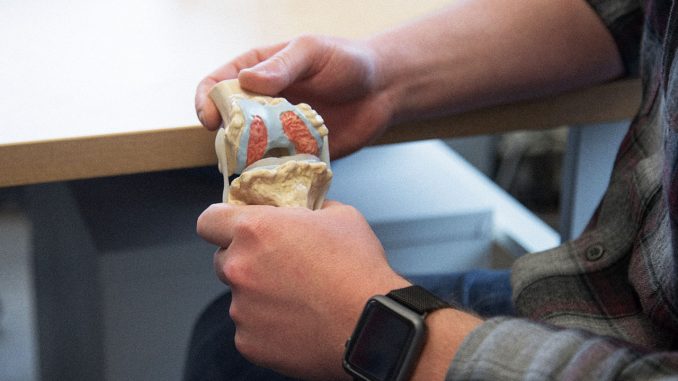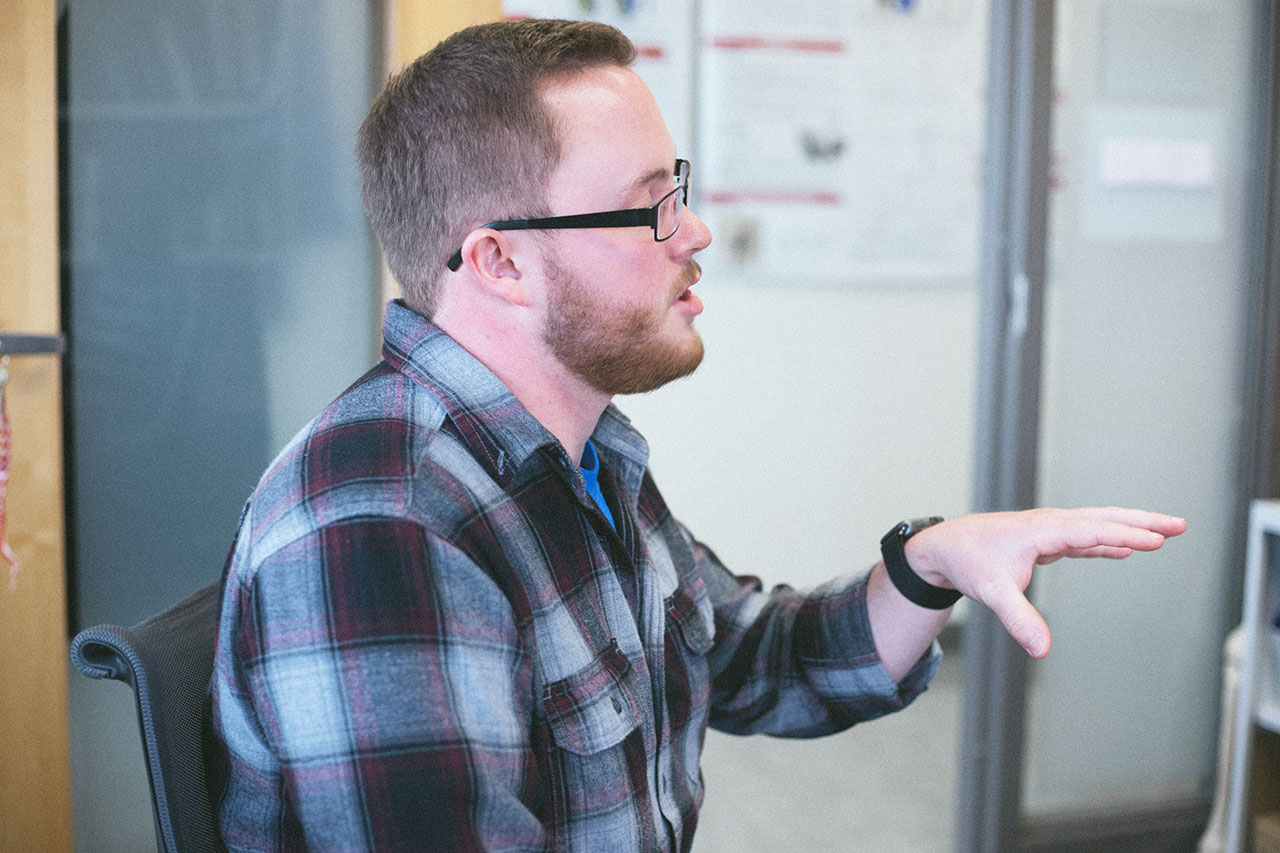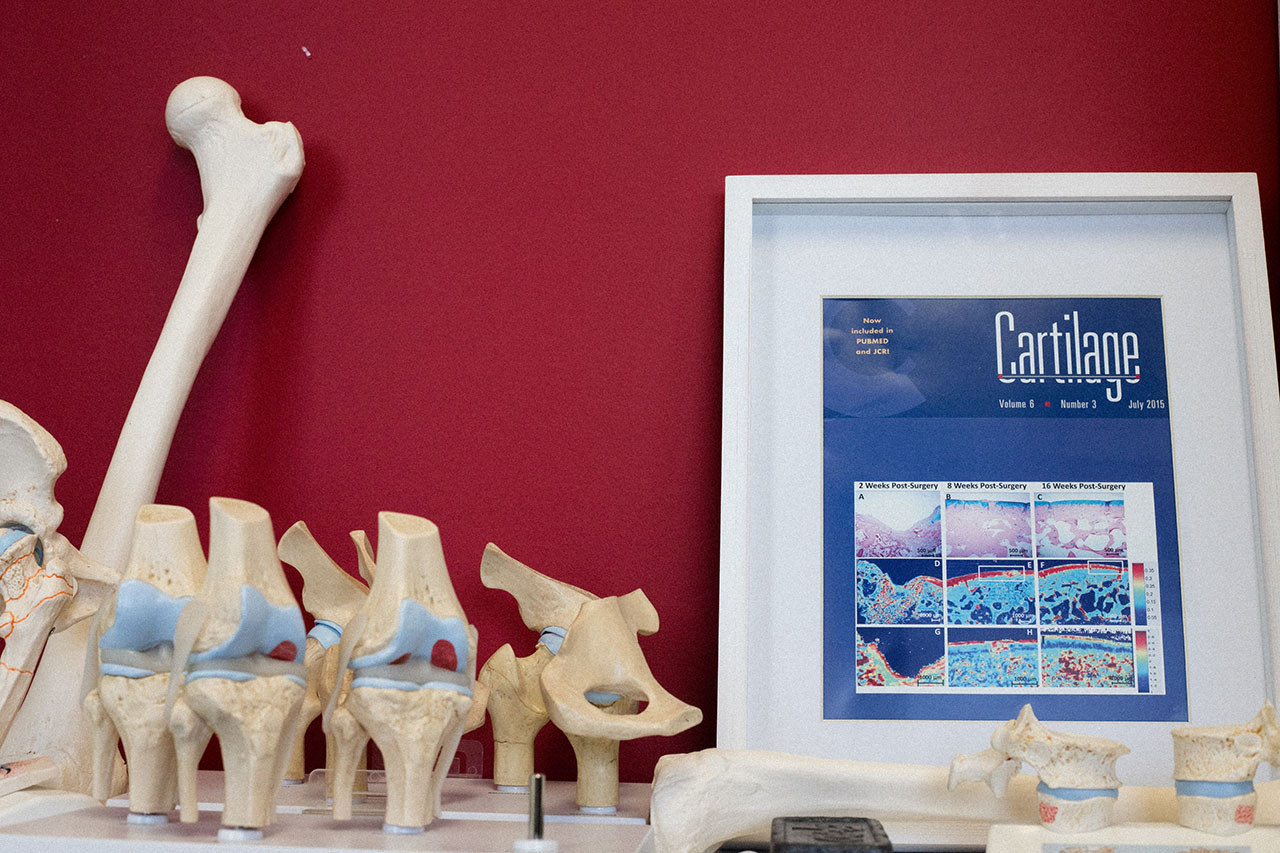
During his freshman year at Berwick High School in Northeastern Pennsylvania, James Karchner was playing in a football scrimmage when he tore his ACL — the ligament that controls the motion of the knee. Two years later, he tore his other ACL during a varsity football game.
Each torn ACL required knee surgery and five to six months of physical therapy to regain his strength. During this process, Karchner started to consider a career in orthopedics, a medical field focused on bones and muscles.
“When I tore the second one, it kind of drove it home,” said Karchner, a senior bioengineering major. “I knew this is what I wanted to do. Of course, as a high school student, I had no clue what that meant, and I was like, ‘I want to fix things and make this better.’”
To pursue his interest in orthopedics, he started doing research in Temple’s Tissue Imaging and Spectroscopy Laboratory during his freshman year with Nancy Pleshko, a bioengineering professor.
On April 18, Karchner traveled to the Capitol Building to present his research on knee cartilage repair before members of Congress, as part of Posters on the Hill. The program selects 60 students to present research to lawmakers and learn how to advocate for undergraduate research funding.
Karchner’s research focuses on preventing osteoarthritis in the knee — a type of arthritis that’s caused when tissues at the end of the bones wear down — by using unconventional and less harmful methods than those currently used.

“If you look at the statistics of the likelihood of osteoarthritis and other joint diseases post-injury, ACL is one of the most common,” Karchner said. “It’s pretty devastating, so I [thought], ‘There needs to be an improvement here some way, and how I can have an impact on that?’”
Cartilage injuries, like an ACL tear, can form defects in the knee. One of the methods that surgeons use to correct defects and prevent osteoarthritis is called osteochondral autograft transplantation, for which cartilage tissues are transplanted from a low-weight bearing region of the knee, to the high-weight bearing region experiencing the injury. This doesn’t always give the knee proper healing capacity, Karchner said.
Karchner’s research sought to use infrared spectroscopy, a low-risk and low-energy method of analyzing tissue, during surgery to analyze and transplant tissues and figure out how the cartilages will best integrate.
“Cartilage repair is still an area that needs a lot of work, [and] there aren’t any solutions that are set in stone,” Pleshko said. “A lot of surgeons and researchers are still working on optimizing it, so we are also.”
Karchner, who shadowed a surgeon in Bloomsburg, Pennsylvania, during the summer before his sophomore year, agreed with Pleshko. The first surgery he observed was a total knee replacement, which was a result of end-stage arthritis.

“Once I saw that, [I] was really like, ‘Oh my gosh, this is terrible,’ because it’s truly invasive and extremely painful for the patients,” Karchner said.
At the Capitol Building, Karchner presented his research in four exclusive meetings with staffers representing members of Congress and in a large poster session.
In each of these meetings, Karchner gave a brief overview of his research and why he was doing it, and Pleshko discussed the importance of funding their work. At the large poster session, many people, including staffers, came up to him to discuss his research in more detail.
Pleshko, who has been Karchner’s research adviser since his freshman year, encouraged him to apply for the competitive Posters on the Hill program because some of his research was already published in Cartilage, an academic medical journal.
“It’s been really wonderful to see him start from a newbie not really knowing anything in the first semester, to being so independent…and really ready to go out there and be a researcher,” Pleshko said.
After graduation, Karchner will conduct research for a maximum of two years at the National Institute on Aging in Baltimore, which is a division of the National Institutes of Health. He hopes to eventually find a lasting solution to cartilage repair.
“Coming out of high school into college, I knew I wanted to dabble in this research because I wanted to do something to improve science and especially related to orthopedics and cartilage work seemed like the perfect fit,” Karchner said. “I couldn’t have asked for anything better.”



Be the first to comment